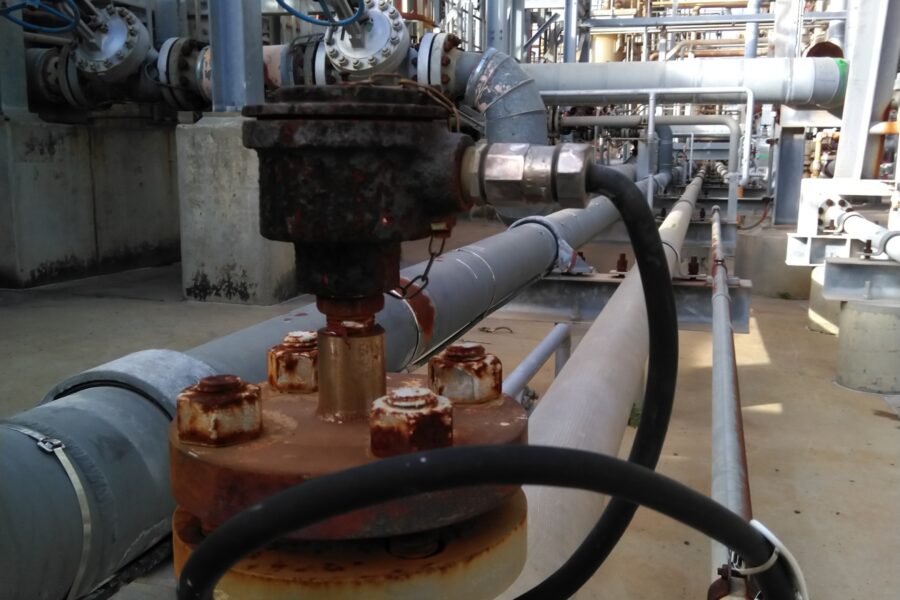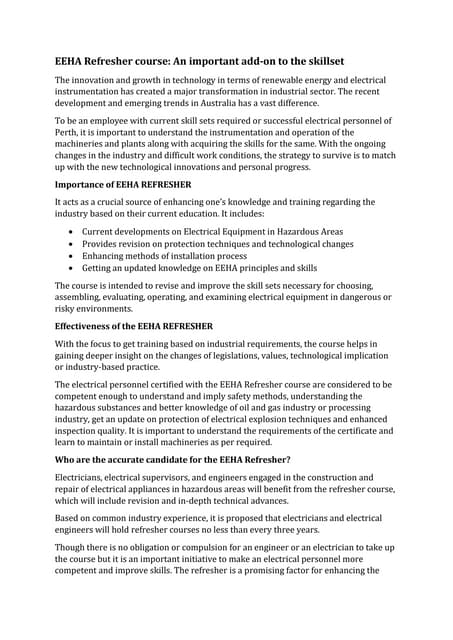Some Known Incorrect Statements About Roar Solutions
Some Known Incorrect Statements About Roar Solutions
Blog Article
Excitement About Roar Solutions
Table of Contents8 Easy Facts About Roar Solutions DescribedThe Buzz on Roar SolutionsSome Ideas on Roar Solutions You Should Know
In such an ambience a fire or surge is feasible when three basic conditions are met. This is usually referred to as the "dangerous area" or "burning" triangle. In order to safeguard setups from a possible explosion a method of evaluating and identifying a potentially unsafe area is required. The objective of this is to make certain the proper option and installation of equipment to eventually avoid a surge and to ensure security of life.
(https://letterboxd.com/roarsolutions/)
No tools should be installed where the surface area temperature level of the tools is greater than the ignition temperature of the given risk. Below are some typical dust unsafe and their minimal ignition temperature level. Coal Dust 380C 225C Polythene 420C (melts) Methyl Cellulose 420C 320C Starch 460C 435C Flour 490C 340C Sugar 490C 460C Grain Dirt 510C 300C Phenolic Resin 530C > 450C Aluminium 590C > 450C PVC 700C > 450C Soot 810C 570C The probability of the hazard existing in a concentration high adequate to trigger an ignition will certainly vary from place to area.
In order to identify this danger an installation is divided into locations of danger depending upon the quantity of time the hazardous is existing. These areas are described as Areas. For gases and vapours and dirts and fibers there are three areas. Area 0 Area 20 An unsafe environment is highly likely to be existing and may exist for lengthy periods of time (> 1000 hours each year) or even continuously Area 1 Zone 21 A dangerous atmosphere is possible but not likely to be present for extended periods of time (> 10 450 C [842 F] A classification of T6 indicates the minimal ignition temperature level is > 85 C [185 F] Hazardous location electrical equipment maybe created for usage in greater ambient temperature levels. This would indicated on the score plate e.g. EExe II C T3 Ta + 60C( This means at 60C ambient T3 will certainly not be exceeded) T1 T1, T2, T3, T4, T5, T6 T2 T2, T3, T4, T5, T6 T3 T3, T4, T5, T6 T4 T4, T5, T6 T5 T5, T6 T6 T6 A T Class rating of T1 means the maximum surface area temperature generated by the tool at 40 C is 450 C. Thinking the associated T Class and Temperature ranking for the devices are proper for the area, you can constantly use a tool with a much more stringent Department rating than needed for the area. There isn't a clear response to this inquiry regrettably. It truly does depend upon the sort of devices and what repairs need to be performed. Equipment with details test procedures that can not be carried out in the field in order to achieve/maintain 3rd party score. Need to return to the factory if it is prior to the devices's solution. Area Repair Work By Authorised Employee: Complicated testing might not be called for nonetheless certain procedures might need to be followed in order for the tools to keep its third party ranking. Authorized personnel need to be used to execute the job correctly Repair service have to be a like for like replacement. New component must be taken into consideration as a straight replacement calling for no special testing of the devices after the fixing is complete. Each tool with a dangerous score should be examined independently. These are detailed at a high degree listed below, however, for even more in-depth details, please refer straight to the standards.
The Single Strategy To Use For Roar Solutions
The tools register is a thorough database of equipment records that consists of a minimum collection of areas to recognize each thing's location, technological criteria, Ex lover category, age, and ecological information. The proportion of Thorough to Shut assessments will be determined by the Tools Danger, which is analyzed based on ignition threat (the likelihood of a resource of ignition versus the likelihood of a flammable ambience )and the dangerous location classification
( Zone 0Area 1, or 2). Carrying out a robust Risk-Based Evaluation( RBI )approach is important for guaranteeing compliance and safety in managing Electric Equipment in Hazardous Areas( EEHA).
About Roar Solutions

In regards to eruptive danger, a hazardous area is a setting in which an eruptive environment is present (or might be anticipated to be present) in amounts that require unique preventative measures for the building, installation and use equipment. electrical refresher course. In this short article we discover the difficulties faced in the work environment, the risk control actions, and the needed competencies to function safely
It issues of contemporary life that we manufacture, check save or manage a variety of gases or liquids that are regarded combustible, and an array of dusts that are deemed combustible. These compounds can, in specific conditions, develop eruptive ambiences and these can have major and terrible effects. A lot of us are familiar with the fire triangular get rid of any kind of one of the 3 components and the fire can not occur, however what does this mean in the context of unsafe locations? When breaking this down right into its simplest terms it is essentially: a mix of a specific quantity of release or leak of a certain substance or material, blending with ambient oxygen, and the visibility of a source of ignition.
In a lot of circumstances, we can do little about the levels of oxygen airborne, but we can have considerable impact on resources of ignition, for example electric devices. Harmful locations are recorded on the dangerous area classification drawing and are identified on-site by the triangular "EX" indicator. Below, among various other essential info, zones are divided right into three types depending upon the hazard, the probability and period that an eruptive atmosphere will exist; Area 0 or 20 is considered one of the most unsafe and Area 2 or 22 is considered the least.
Report this page